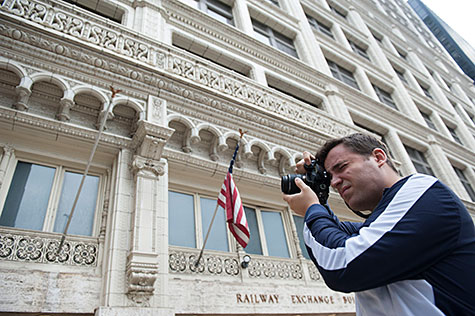
Built in 1914 in the heart of downtown St. Louis, the Railway Exchange Building is an icon, synonymous with Christmas lights, holiday cheer and civic pride. Yet since being vacated by Macy’s in 2013, the 21-story high-rise sits largely empty.
Now The Partnership for Downtown St. Louis and the Sam Fox School of Design & Visual Arts at Washington University in St. Louis, in cooperation with the building’s owners, are partnering to explore adaptive reuse alternatives for the 1.2 million-square-foot structure.
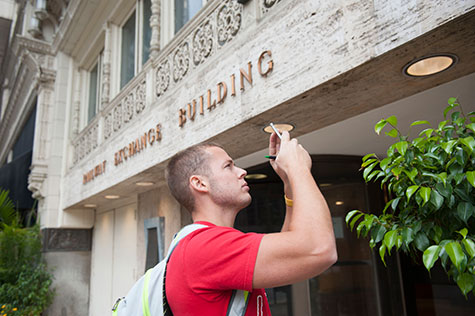
“The Railway Exchange Building was once the tallest building in St. Louis and the largest structure of its kind in the country,” said Doug Woodruff, president and CEO of The Partnership for Downtown St. Louis. “We now have the brightest young minds in architecture thinking outside the box to create awareness of its potential and opportunities for the future.”
Graduate students in the studio Metamorphic Cities: Sustainable Strategies for Adaptive Reuse, taught by Catalina Freixas, assistant professor, will develop innovative design ideas to reimagine the Railway Exchange Building, reinvigorate the surrounding area and contribute to the continuing transformation of downtown St. Louis.
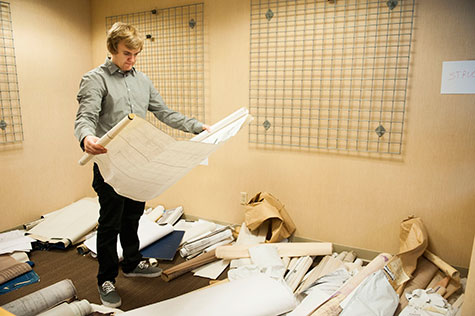
“Upon completion of the CityArchRiver project, there will be even more visitors funneled into the streets of downtown,” Woodruff said. “This building is in a prime location to be a destination for people moving throughout the downtown core.”
Bruce Lindsey, dean of the Sam Fox School’s College of Architecture and Graduate School of Architecture & Urban Design, notes that, over the last decade, the central business district has experienced one of the nation’s largest percentage increases in college-educated 25- to 34-year-olds, adding nearly 3,000 people.
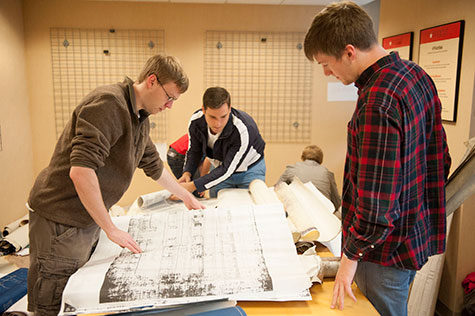
“Young people are interested in sustainability, and one of the keys to sustainability is urban density,” said Lindsey, the E. Desmond Lee Professor for Community Collaboration. “The Railway Exchange Building represents an amazing opportunity to apply adaptive reuse strategies at a scale that’s virtually unheard of in St. Louis. It’s very exciting.”
The studio will culminate in a community event hosted by The Partnership at the Railway Exchange Building at 6 p.m. Wednesday, Dec. 10. There will be an exhibition of the students’ work showcasing future development ideas for the building, including a book highlighting the research undertaken throughout their process.
The Partnership and the Sam Fox School will provide progress updates leading up to the December event at downtownstl.org and samfoxschool.wustl.edu.
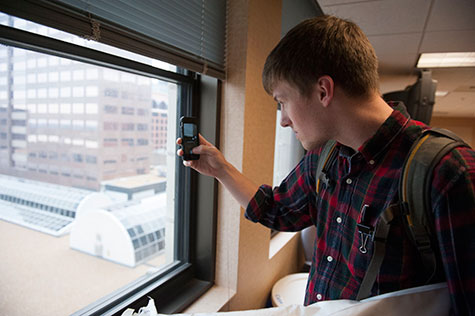
The Partnership for Downtown St. Louis serves as a catalyst for creating and promoting a downtown that attracts investment, economic activity and vibrancy at the hub of our region. The Partnership also manages the Downtown St. Louis Community Improvement District, which supplements city services to make Downtown St. Louis a cleaner, safer and more inviting place.
The Sam Fox School of Design & Visual Arts is an interdisciplinary and diverse community of architects, artists, and designers dedicated to excellence in learning, creative activity, research, and exhibition. This unique structure allows the School to build on the strengths of each unit—Art, Architecture, and Museum—and to draw on the resources of Washington University to create new knowledge and address the social and environmental challenges of our time.